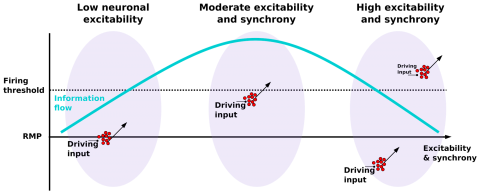Researchers use computer model to study schizophrenia

Dr. Mohamed Sherif, a psychiatrist and computational neuroscientist at Brown University, has developed a computer model of a brain region involved in memory and formation of beliefs that can help pave the way for treatments for schizophrenia.
The human brain uses several frequency bands for the flow of information. The brain comprises multiple levels, from networks to microcircuits, various neuronal populations and different channels and receptors. In a new paper published in the journal Nature Publishing Partners Schizophrenia, Sherif used a computer model of the hippocampus to understand how simultaneously targeting multiple channels and receptors in the brain might help cognitive symptoms of schizophrenia.
“Psychiatric disorders are challenging, partly because of the brain’s complexity,” said Sherif, an assistant professor of psychiatry and human behavior who joined Brown in August. “Psychiatric disorders involve abnormalities at different levels in the brain, and the symptoms are thought to result from the high-level network interactions. Intuition alone cannot explain how pharmacological treatments, acting at a molecular level, help network-level interactions and psychiatric symptoms.”
Biophysically-realistic computer models of the affected brain microcircuits represent a possible solution to brain complexity, Sherif said. In the paper, Sherif used the computer model of the CA3 hippocampal region to examine how novel pharmacological targets would improve information flow across the CA3 region. Co-authors on the study include Samuel Neymotin, research scientist at The Nathan Kline Institute for Psychiatric Research, and Dr. William Lytton, professor of physiology, pharmacology and neurology at SUNY Downstate Medical Center.
“One of the interesting findings from the simulation work is that gamma oscillations, abnormal in schizophrenia patients and thought to be involved in local computations in the cortex, are not always beneficial,” said Sherif, who is affiliated with the Carney Institute for Brain Science. “Both low and high gamma power was associated with impaired information flow.”
At Brown, Sherif's lab uses computational techniques to understand microcircuit mechanisms underlying psychiatric disorders and their treatments, focusing on schizophrenia, major depressive disorder and obsessive compulsive disorder (OCD). Cortical microcircuit modeling links the molecular and cellular alterations mediated by treatments to microcircuit function underlying disease symptoms. To elucidate the microcircuit alterations in various psychiatric disorders, the researchers in Sherif's lab use cortical computer models to interpret intracranial electroencephalography recordings, resting-state electroencephalogram (EEG) and magnetoencephalography, and event-related potentials in patients.
Researchers in Sherif's lab collaborate with several investigators to analyze EEG datasets from patients to study mechanisms of action of breakthrough treatments, like ketamine and psilocybin, in treatment-resistant depression, as well as mechanisms underlying deep brain stimulation used for treatment of OCD.
“The computer modeling approach makes it possible to systematically address the brain’s complexity and has the potential to personalize treatments to individual patients,” Sherif said.



